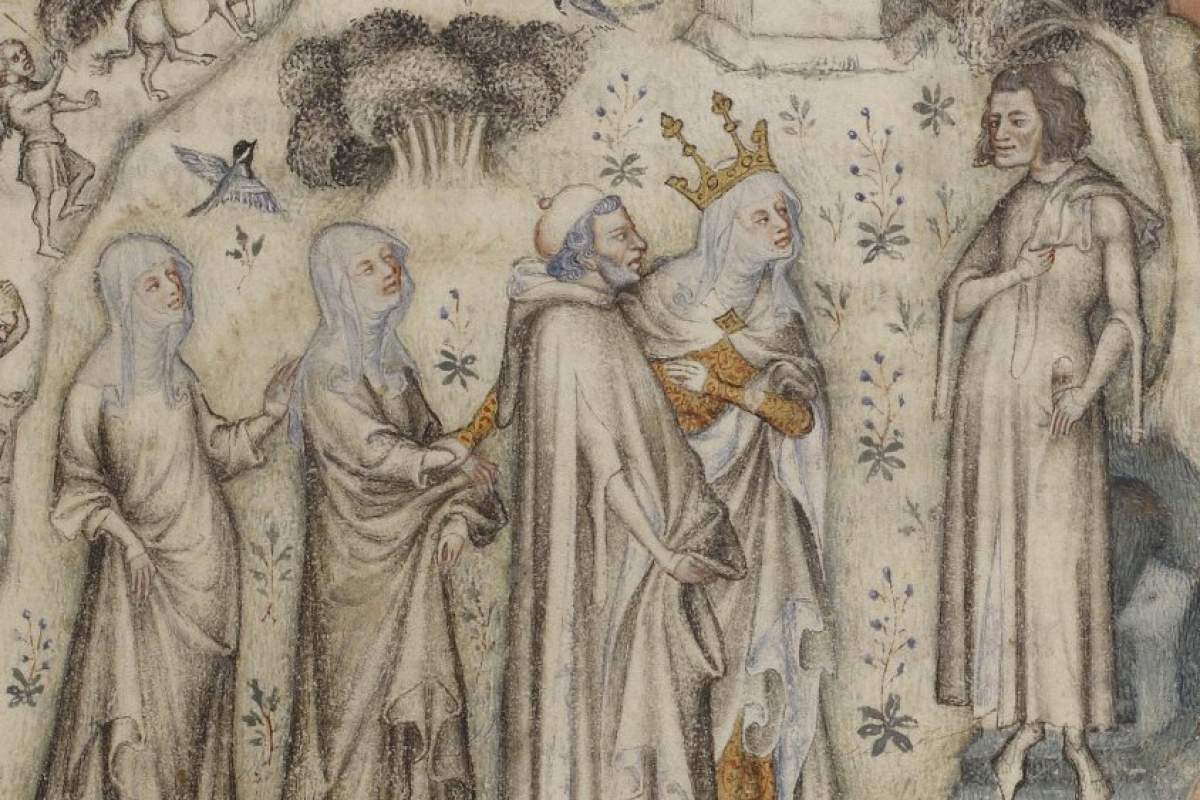
In the history of polyphonic music, Guillaume de Machaut is one of the big guns. Â His 'Messe de Nostre Dame' is inordinately famous, and is often cited as the first complete polyphonic setting of a Mass ordinary by a single composer.
The five-member Vienna Vocal Consort has devoted their third release on the Klanglogo label to this monument of a piece. It is paired with a Magnificat by Franco-Flemish composer Pierre de la Rue alongside various other Marian settings by composers from the gothic to the baroque, in a program that shows stylistic development in music from the 13th all the way to the 18th century.
Machaut and the Ars Nova
The recording, titled, ‘Nostre Dame,' takes its name from the Machaut masterpiece of medieval counterpoint, which was in its time cutting edge. Machaut was a champion of the early Ars Nova and a key figure in the transition to the new compositional techniques that took hold around 1300.
The old Gregorian chant was strictly monophonic. Its notation by neumes could only adequately depict the general shape of a chant melody. As music gradually began to outgrow its notation, composers came up with the diastematic system to give a little more information. In this system, noteheads could now show precise pitches and intervals. Soon composers faced the new challenge of how to indicate how long a note should be held, to which Philippe de Vitry responded with his system of mensural notation.
De Vitry is also credited with the advent of  isorhythm, a method of composition that organized a melody into a repetitive rhythmic pattern called a talea, over which one or more original melodies could be composed.  Machaut adopted, expanded, and championed isorhythm especially in his motets and his Mass.
Performing Forces
Those familiar with performances of Machaut's Messe de Nostre Dame might be used to hearing it performed by ensembles made up of male countertenors and altos. The Vienna Consort's five member ensemble includes two women who cover various parts in various sections over the course of the disc. The sound is very different, however in their configuration they do bring a certain clarity to the polyphony.
Palestrina
Another work on this the Vocal Consorts recording is Palestrina's Ave Maria. Palestrina like Machaut, was also a trend-setter. In many college theory classes, music students learn ways to imitate Palestrina's counterpoint--and for a good reason. Palestrina's attention to and treatment of dissonances and their rhythmic resolutions in music produced a characteristically smooth and more consonant type of polyphony that represents a pinnacle of Renaissance composition.
Juan Francés de Iribarren
The latest chronological work included on this disc is the Stabat Mater by the relatively unknown 18th century Spanish composer Juan Francés de Iribarren. The short and beautiful simplicity of this piece coming after the busyness of the Machaut is a welcome addition to the program.









